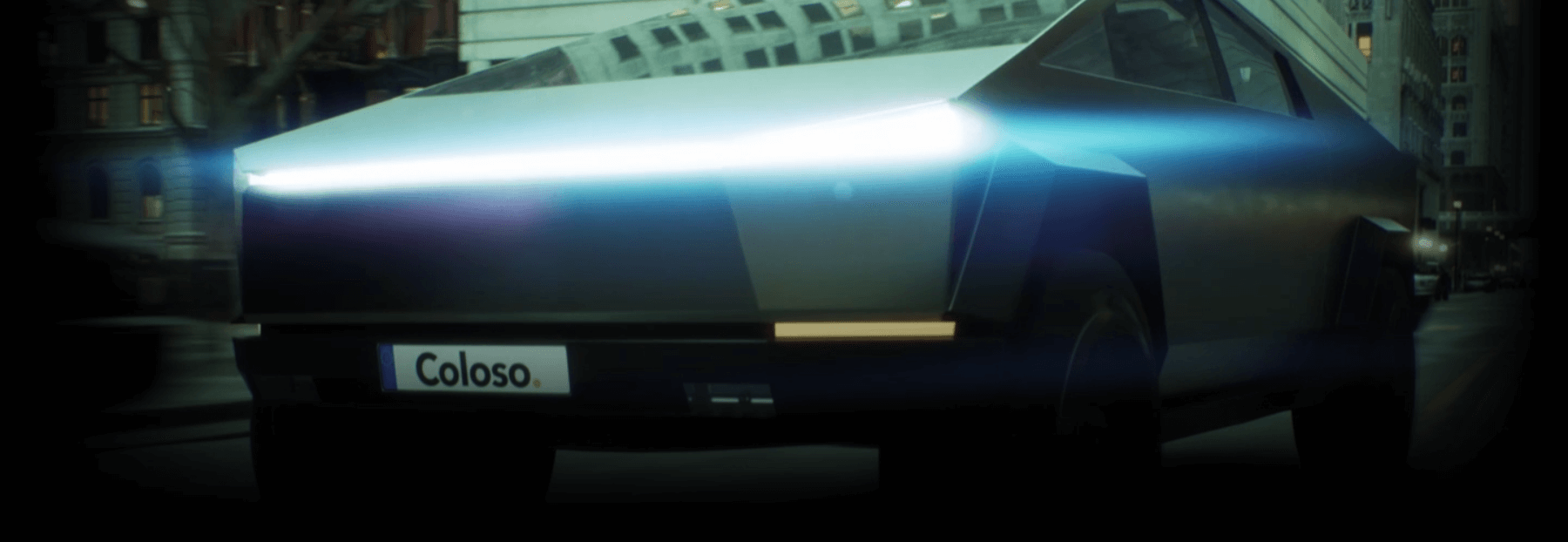
01. Orientation
Instructor introduction
Class direction
Curriculum overview
01. 方向
导师介绍
班级方向
课程概述
02. Automotive content utilizing Unreal Engine
Reasons for choosing Unreal Engine
Introduction to automotive content references using Unreal Engine
Installation of essential software for the class
02. 利用虚幻引擎的汽车内容
选择虚幻引擎的原因
使用虚幻引擎的汽车内容参考简介
安装课程必备软件
03. Car assets and cyclorama wall scene setup
Importing car assets
Setting up studio scenes using cyclorama wall and commercial assets
03. 汽车资产和天幕墙场景设置
进口汽车资产
使用天幕墙和商业资产设置工作室场景
04. Light sources for technical lighting
Realistic lighting using light textures and IES
Configuring light blueprints using light objects
04. 技术照明光源
使用光纹理和 IES 实现逼真的照明
使用灯光对象配置灯光蓝图
05. Studio lighting setup
HDRI setup for natural indirect lighting
Using Rect Lights for soft shadows
Reflection lighting for product details
Utilizing light channels
05.工作室灯光设置
HDRI 设置用于自然间接照明
使用矩形光源产生柔和阴影
反射照明以呈现产品细节
利用光通道
06. Comparison of Ray Tracing, Lumen, and Path Tracing
Types and methods of real-time rendering
Enhanced rendering features in Unreal Engine 5.1
Hybrid rendering techniques
Differences between DCC tools and other renderers
06. 光线追踪、流明和路径追踪的比较
实时渲染的类型和方法
Unreal Engine 5.1 中的增强渲染功能
混合渲染技术
DCC 工具与其他渲染器之间的差异
07. Production of high-quality and high-definition still images
High-resolution tiled rendering
Rendering details using console commands
Quality development techniques according to anti-aliasing settings
Tips for removing rendering noise
07. 高品质、高清晰度静态图像制作
高分辨率平铺渲染
使用控制台命令渲染细节
根据抗锯齿设置进行质量开发的技术
消除渲染噪音的技巧
08. Car selection
Introduction to free car assets
Introduction to paid car asset sales sites
How to choose the desired car asset
How to check if a car asset is suitable for rigging
08. 选择汽车
免费汽车资产介绍
付费汽车资产销售网站简介
如何选择理想的汽车资产
如何检查汽车资产是否适合装配
09. Setting up car rigging for animation production
Basic Blender interface
Reconfiguring assets suitable for rigging
Classifying materials
Car rigging using Blender Addon
Exporting in a form usable in Unreal Engine (skeletal)
09.为动画制作设置汽车索具
基本 Blender 界面
重新配置适合索具的资产
材料分类
使用 Blender Addon 进行汽车装配
以虚幻引擎可用的格式导出(骨架)
10. Shading and look development techniques for cars using Unreal Engine
Understanding Automotive Materials
Classifying materials needed for car assets
Techniques for developing custom materials
Environmental lighting settings for look development
Applying materials to selected car parts
10. 使用虚幻引擎进行汽车着色和外观开发技术
了解汽车材料
对汽车资产所需材料进行分类
开发定制材料的技术
外观开发的环境照明设置
将材料应用于选定的汽车零部件
11. Creating a turntable
The process of car look development according to light and environmental changes
How to set up a turntable for lighting checks
Using Sequencer to create environment-specific turntables
11. 创建转盘
根据光线和环境变化的汽车外观开发过程
如何设置转盘以进行照明检查
使用 Sequencer 创建特定于环境的转盘
12. Chaos Vehicles plugin
Applying Chaos Vehicles
Configuring physics assets
Creating vehicle and wheel blueprints
Implementing features such as engines, wheels, steering, brakes, and handbrakes
Vehicle control mapping
12. Chaos Vehicles 插件
使用 Chaos 车辆
配置物理资产
创建车辆和车轮蓝图
实现发动机、车轮、转向、刹车和手刹等功能
车辆控制测绘
13. Directing car actions
Creating a vehicle game mode
Making control rigs
Testing car operation
Using Take Recorder and Sequencer
13. 指挥汽车行动
创建车辆游戏模式
制造控制设备
测试车辆运行
使用片段录音机和音序器
14. Car scenes in nature
Designating collision areas in Salt Desert levels
Setting up cinematic camera layouts
Developing environmental lighting
Post-correction with post-processing
14. 自然界中的汽车场景
在盐漠层级中指定碰撞区域
设置电影摄影机布局
开发环境照明
后期处理校正
15. Bridge car driving scene
Collision settings based on bridge assets
Using HDRI backdrops
Setting up multi-cinematic camera layouts
Creating lighting suitable for Path Tracing
Setting Path Tracing with post-processing
15.桥车行驶场景
根据桥梁资产的碰撞设置
使用 HDRI 背景
设置多摄像机布局
创建适合路径追踪的照明
使用后处理设置路径追踪
16. Path Tracing rendering using Movie Render Queue
Techniques for Path Tracing render settings
Configuring anti-aliasing suitable for Path Tracing
Methods to reduce render time
Outputting ProRes Mov
16. 使用影片渲染队列进行路径追踪渲染
路径追踪渲染设置技术
配置适合路径追踪的抗锯齿
减少渲染时间的方法
输出 ProRes Mov
17. Creating virtual characters
Introduction and demonstration of mobile scan software (RealityScan, Luma AI, etc.)
Creating 3D face mesh
Making custom MetaHumans using the Mesh to MetaHuman plugin
Implementing realistic MetaHumans using MetaHuman Creator
Importing MetaHumans into Unreal Engine via Quixel Bridge
17.创建虚拟角色
移动扫描软件(RealityScan、Luma AI等)的介绍和演示
创建 3D 脸部网格
使用 Mesh to MetaHuman 插件制作自定义 MetaHumans
使用 MetaHuman Creator 实现逼真的 MetaHuman
通过 Quixel Bridge 将 MetaHumans 导入虚幻引擎
18. Markerless motion capture using video
Introduction and demonstration of video-based AI motion capture software
Exporting motion capture data suitable for Unreal Engine
18. 使用视频进行无标记动作捕捉
基于视频的AI动作捕捉软件介绍及演示
导出适合虚幻引擎的运动捕捉数据
19. Utilizing motion capture data
New retargeting system in Unreal Engine 5
Utilizing skeleton compatibility features
Animations fitting the MetaHuman skeleton structure
19. 利用动作捕捉数据
虚幻引擎 5 中的新重定向系统
利用骨架兼容性功能
符合 MetaHuman 骨骼结构的动画
20. Directing car chase scenes in the city
Optimization of City Sample for cinematic production
Virtual production level for creating urban chase scenes
Setting up multi-car play scenes using Take Recorder
Configuring and editing multi-take sequences
Environmental and local lighting
20. 导演城市里的汽车追逐场景
优化城市样本以适应电影制作
创建城市追逐场景的虚拟制作水平
使用 Take Recorder 设置多车播放场景
配置和编辑多镜头序列
环境和局部照明
21. Car scenes featuring characters
Importing custom MetaHumans
Blueprint of custom MetaHuman in business attire
Configuring and applying motion capture data and compatible animations
Designing vehicle and character hierarchy
Developing car chase scenes
21. 人物汽车场景
导入自定义 MetaHumans
定制 MetaHuman 商务装扮蓝图
配置和应用运动捕捉数据和兼容动画
设计车辆和角色层次
开发汽车追逐场景
22. Final rendering and color grading using Lumen
Developing environments and configuring hybrid rendering with Lumen
Creating realistic moods with post-processing
Editing cuts using DaVinci Resolve
Color grading and correction
22. 使用 Lumen 进行最终渲染和颜色分级
使用 Lumen 开发环境和配置混合渲染
通过后期处理创造逼真的氛围
使用 DaVinci Resolve 编辑剪辑
色彩分级和校正
23. Extracting virtual cameras from images using fSpy
Camera matching process based on still images using fSpy
Converting camera data extracted with fSpy to Blender
Importing camera data into Unreal Engine Sequencer
23. 使用 fSpy 从图像中提取虚拟相机
使用 fSpy 基于静态图像的相机匹配过程
将使用 fSpy 提取的相机数据转换为 Blender
将摄像机数据导入虚幻引擎 Sequencer
24. Recreating a studio car scene in an outdoor LED advertisement style
Design process for levels suitable for LED outdoor advertisements
Expanding spaces according to camera perspectives
Layout maximizing the anamorphic illusion effect
Composing animations using Sequencer
24. 以户外 LED 广告风格重现演播室汽车场景
适合 LED 户外广告的层级设计流程
根据相机视角扩展空间
最大化变形幻觉效果的布局
使用 Sequencer 创作动画
25. Using nDisplay and In-Camera VFX for anamorphic content
Real-time projection mapping
using nDisplay and In-Camera VFX
Implementing the final product without multiple rendering processes
Choosing a rendering method (Ray Tracing, Lumen, and Path Tracing)
25. 使用 nDisplay 和 In-Camera VFX 制作变形内容
实时投影映射
使用 nDisplay 和 In-Camera VFX
无需多个渲染过程即可实现最终产品
选择渲染方法(光线追踪、流明和路径追踪)
26. Real-time nDisplay broadcasting and video outputting
Configuring local nDisplay using nDisplay Launch
Broadcasting real-time anamorphic content using nDisplay
Outputting anamorphic content video in standard sequences
26.实时nDisplay广播和视频输出
使用 nDisplay Launch 配置本地 nDisplay
使用 nDisplay 广播实时变形内容
以标准序列输出变形内容视频
最后更新时间 4 月 by 毒奶粉








